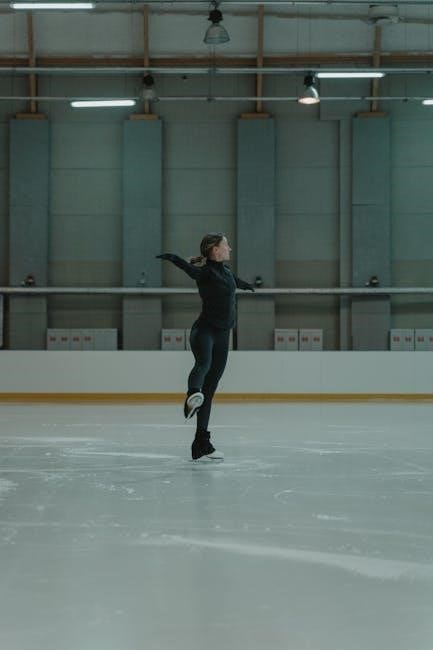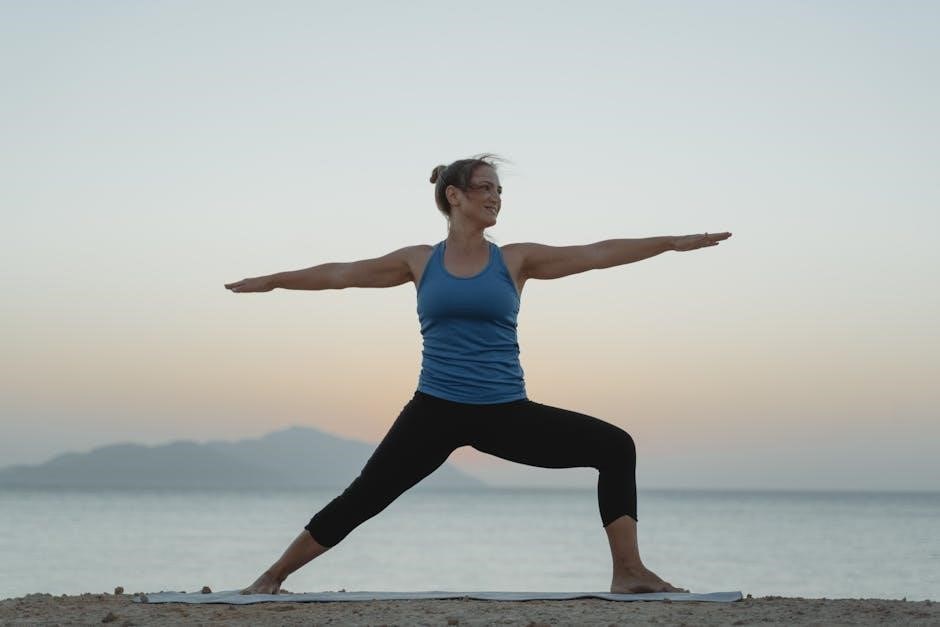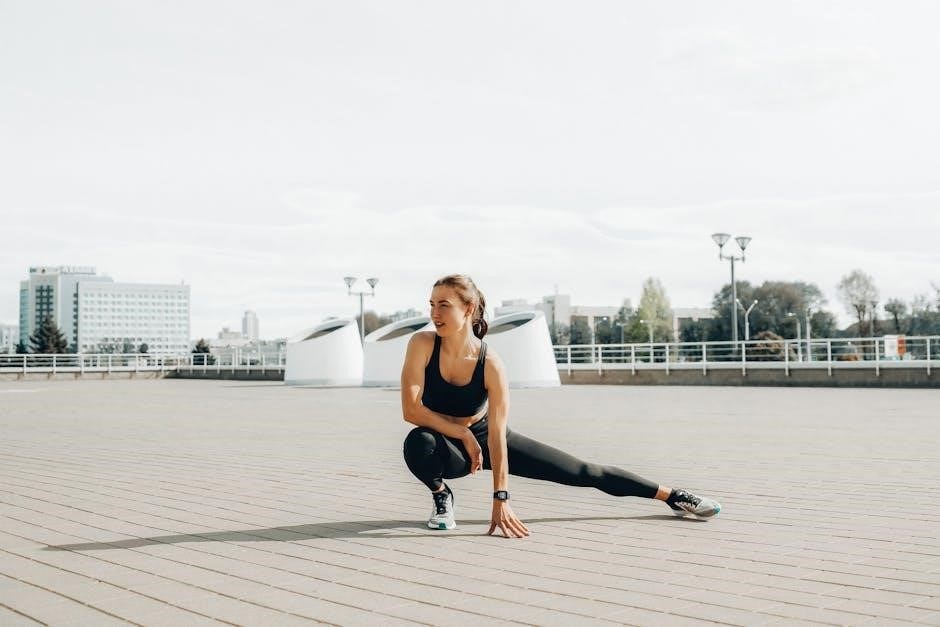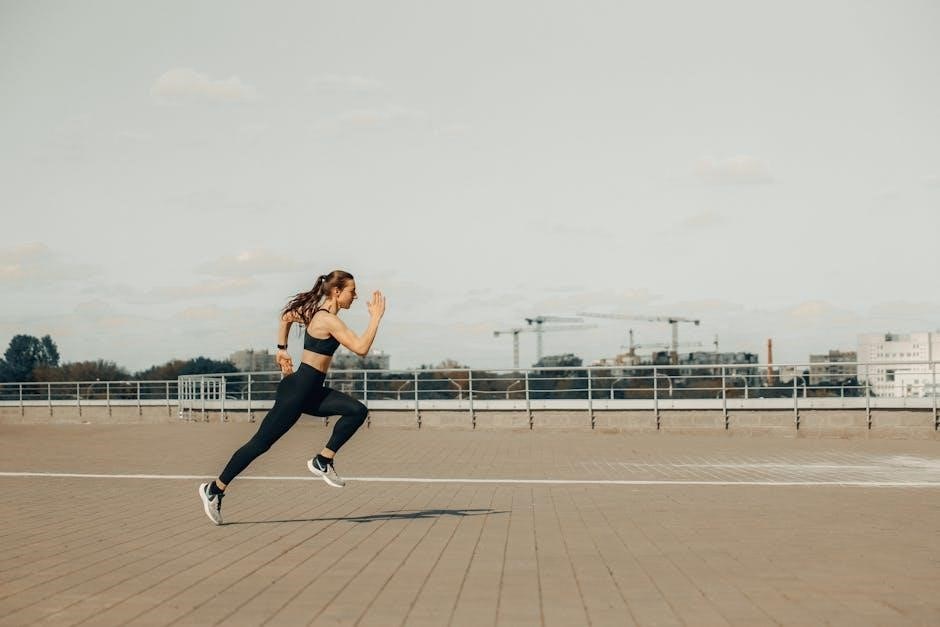Concussion exercises pdf provides guidance on rehabilitation‚
including physical therapy and targeted exercises‚
to help individuals recover from concussions safely and effectively online.
Understanding the Importance of Post-Concussion Rehabilitation
Post-concussion rehabilitation is a crucial aspect of recovery from a concussion‚ and exercises play a vital role in this process. The primary goal of post-concussion rehabilitation is to help individuals recover from the physical‚ cognitive‚ and emotional symptoms of a concussion. A well-structured rehabilitation program can help alleviate symptoms‚ improve function‚ and reduce the risk of long-term complications. The internet provides a wealth of information on concussion exercises pdf‚ including guidelines and protocols for rehabilitation. These resources emphasize the importance of a gradual and progressive approach to rehabilitation‚ with a focus on individualized exercise programs. By understanding the importance of post-concussion rehabilitation‚ individuals can take an active role in their recovery and work towards a safe and effective return to normal activities. Effective rehabilitation requires a comprehensive approach‚ incorporating physical therapy‚ cognitive rehabilitation‚ and emotional support. With the right guidance and support‚ individuals can navigate the recovery process and achieve optimal outcomes.

Adaptation Exercises for Concussion Recovery
Exercises help improve cognitive function and balance‚ enhancing overall recovery through targeted movements and activities online daily.
Gaze Stability Exercises for Improved Focus
Gaze stability exercises are designed to improve focus and reduce dizziness‚ helping individuals recover from concussions.
These exercises typically involve moving the head while focusing on a stationary object‚ such as a target or a wall.
The goal is to maintain clear vision and stability despite the movement‚ which can help improve overall balance and coordination.
By practicing gaze stability exercises‚ individuals can enhance their ability to focus and concentrate‚ reducing the symptoms of concussion.
Exercises can be tailored to individual needs and progressed as symptoms improve‚ allowing for a gradual return to normal activities.
It is essential to work with a healthcare professional to develop a personalized exercise program‚ ensuring a safe and effective recovery.
Regular practice and patience are key to achieving improved gaze stability and overall concussion recovery‚ and exercises can be modified to suit different ages and abilities‚ making them accessible to everyone.
Gaze stability exercises are a valuable component of concussion rehabilitation‚ and when combined with other exercises‚ can help individuals regain their strength‚ balance‚ and overall well-being.

Concussion Rehabilitation Home Exercise Program
Exercises are designed to target areas with identified deficits‚ taking 10-15 minutes to complete‚ under the guidance of a concussion provider‚ using a personalized program online.
Targeted Exercises for Identified Deficits
Targeted exercises are designed to address specific deficits identified during the concussion rehabilitation process‚ such as gaze stability‚ balance‚ and cognitive function. These exercises are typically personalized to meet the individual’s needs and are progressed based on their response. The goal of targeted exercises is to improve functional abilities and reduce symptoms. A concussion provider will recommend a set of exercises to be completed at home‚ which may include activities such as eye movements‚ balance exercises‚ and cognitive tasks. It is essential to follow the recommended exercises and progress them as instructed to ensure optimal recovery. The exercises should be completed regularly‚ ideally 2-3 times a day‚ and for a duration of 10-15 minutes. By incorporating targeted exercises into the concussion rehabilitation program‚ individuals can improve their overall function and reduce the risk of prolonged recovery. Regular monitoring and adjustments to the exercise program are necessary to ensure optimal progress and recovery.

UPMC Sports Medicine Concussion Program Guidelines
Guidelines provide stages of rehabilitation with recommended exercises and target heart rates for safe recovery from concussions online through UPMC sports medicine concussion program guidelines and protocols always.
Stage of Rehabilitation and Recommended Exercises
The stage of rehabilitation is crucial in determining the recommended exercises for individuals recovering from concussions. According to the UPMC sports medicine concussion program‚ the stages of rehabilitation are tailored to the individual’s progress and symptoms. The program outlines specific exercises and target heart rates for each stage‚ ensuring a safe and effective recovery. The exercises are designed to improve physical function‚ reduce symptoms‚ and enhance overall well-being. The recommended exercises include physical therapy‚ gaze stability exercises‚ and individual ball exercises‚ which are progressed based on the individual’s response and tolerance. The program also emphasizes the importance of proper breathing techniques and pacing to avoid exacerbating symptoms. By following the recommended exercises and stages of rehabilitation‚ individuals can optimize their recovery and reduce the risk of long-term complications. The concussion exercises pdf provides a comprehensive guide to the rehabilitation process‚ including the stages of rehabilitation and recommended exercises.

Individual and Advanced Ball Exercises for Concussion Recovery
Individual ball exercises involve throwing and catching‚ progressing to advanced exercises with movement and reaction time‚ aiding concussion recovery and rehabilitation online safely.
Exercise Progression and Adjustment to Individual Needs
Exercise progression is crucial in concussion rehabilitation‚ as it allows individuals to gradually increase their physical and cognitive demands. The key is to adjust the exercises to the individual’s needs‚ taking into account their unique symptoms and limitations. This can be achieved by monitoring their response to each exercise and making adjustments as needed. For example‚ if an individual is experiencing dizziness or headaches during a particular exercise‚ the intensity or duration of the exercise can be reduced. Conversely‚ if an individual is able to complete an exercise without difficulty‚ the intensity or duration can be increased. By tailoring the exercise program to the individual’s needs‚ healthcare professionals can help them progress safely and effectively through the rehabilitation process. This personalized approach can help individuals recover from concussions and return to their normal activities‚ including sports and other physically demanding pursuits‚ in a timely and successful manner‚ with online resources available.
